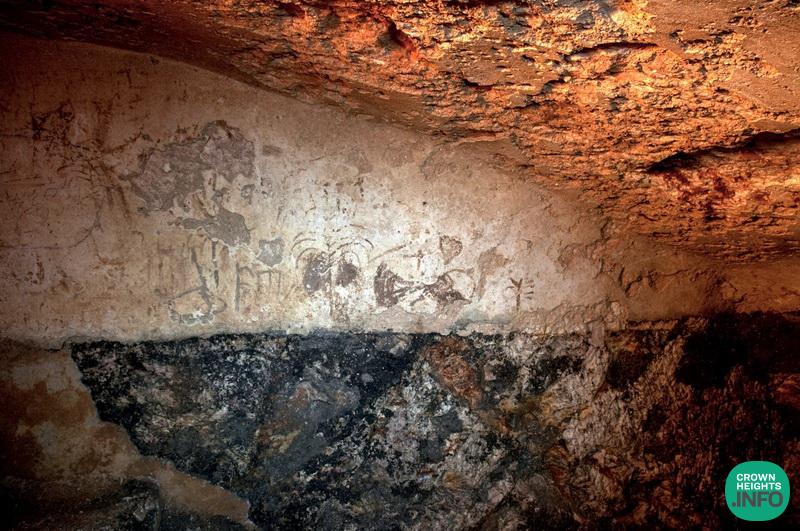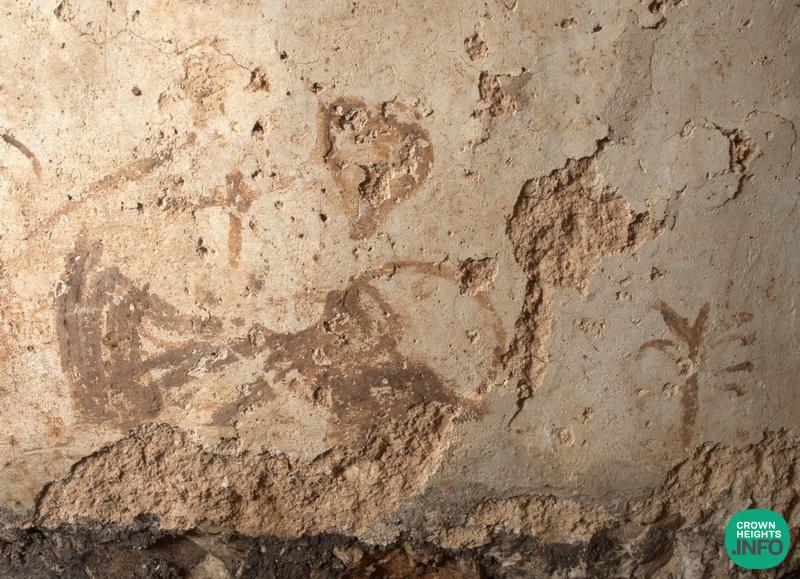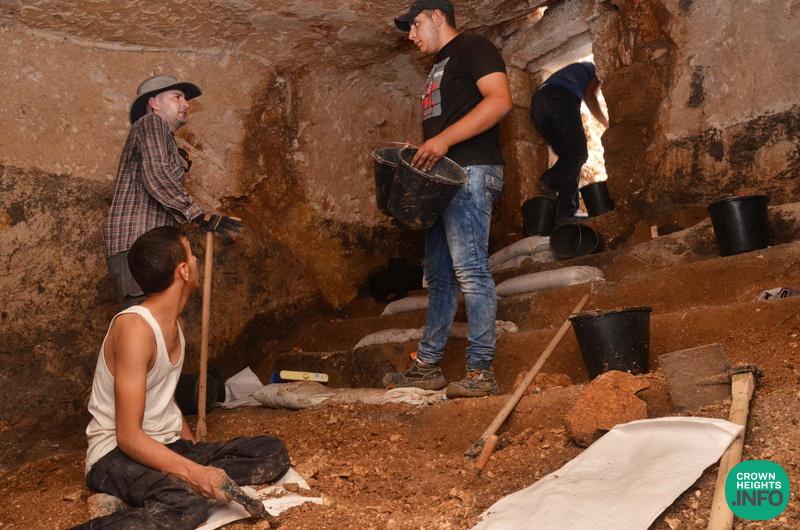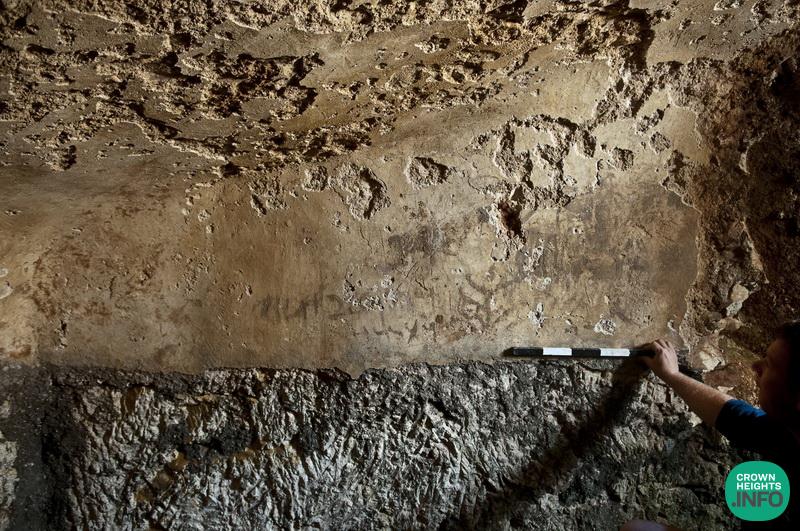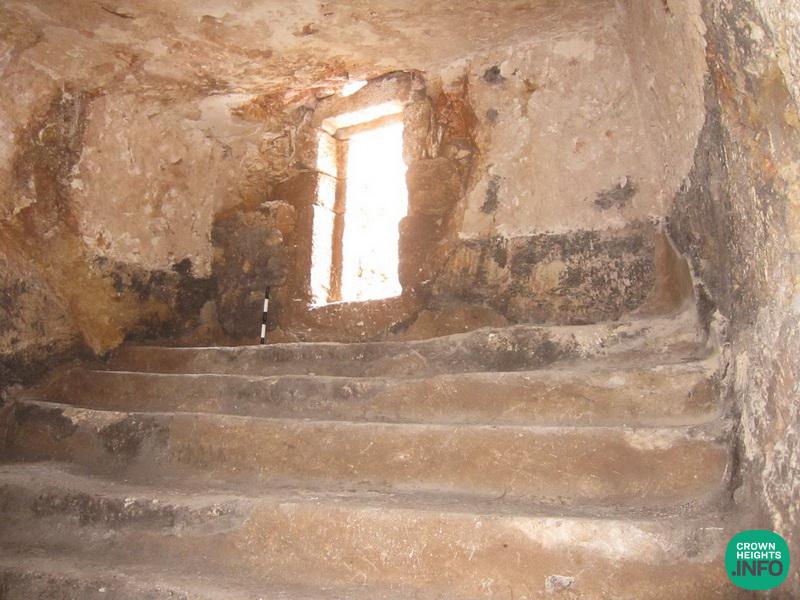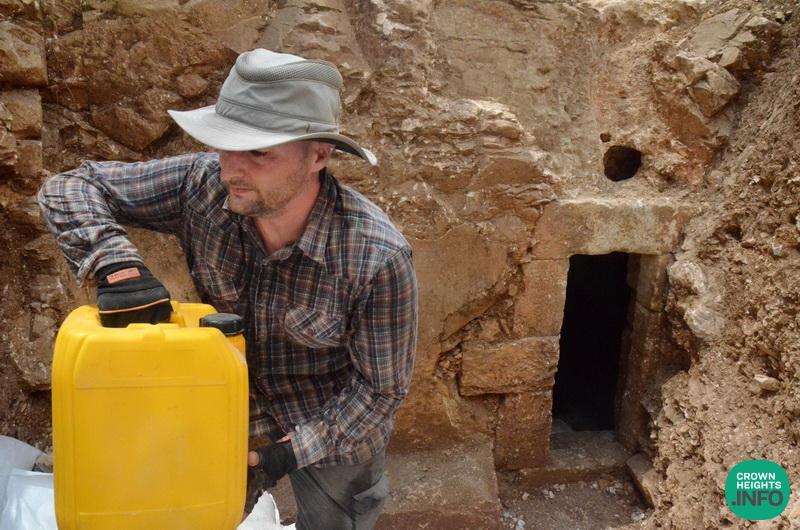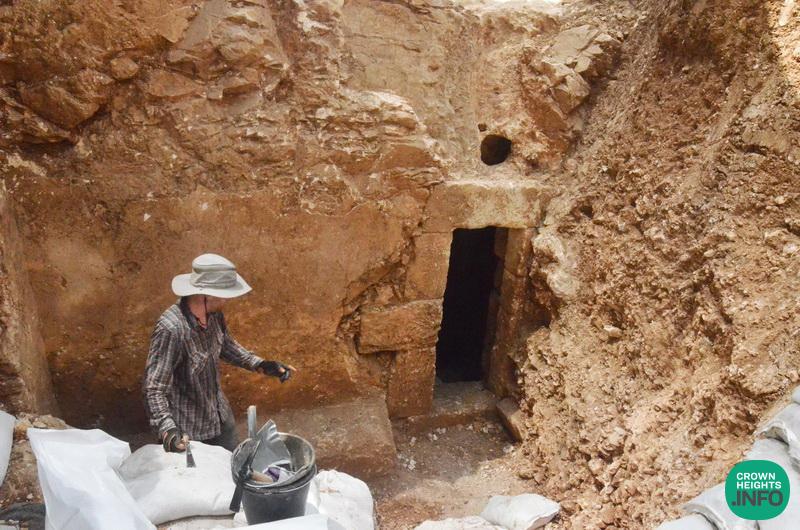
Random Graffiti or Encoded Messages? The Mysterious Message in A Second-Temple Period Mikvah
Random graffiti or encoded messages? The mystery of the ancient messages on the plastered walls of the Second-Temple Period Ritual Bath (Miqveh).
In the course of excavations conducted by the Israel Antiquities Authority in 2015 in the Arnona residential area of Jerusalem, an elaborate ritual bath (miqveh) dating from the first century CE Second Temple period was uncovered inside an underground cave. The location of the cave near to the ancient road leading from the area of Bethlehem to Jerusalem, researchers consider that the miqveh served as a public facility for Jewish pilgrims ritually cleansing themselves on the road to the Temple in Jerusalem.
The walls of the miqveh were coated with plaster and decorated with drawings and inscriptions executed in mud and soot; some were engraved in the plaster. Alexander Wiegmann and Royee Greenwald, the Israel Antiquities Authority directors of the excavation told us, “It was a big surprise to discover wall-art, depicting ships, trees and plants, as well as symbols that we couldn’t decipher.” According to an article by Alexander Wiegmann, Dr. Haggai Misgav of the Hebrew University, and Dr. Zaraza Friedman of the University of Haifa, published in Hebrew in the archaeological journal Qadmoniot, the inscriptions on the walls were written in the Aramaic language in cursive Jewish script.
Six drawings of plants were clearly identified in the cave miqveh, including date palms, which quite commonly featured in Jewish art during the Second Temple period. The depiction of the date palm as a symbol of the Land of Israel on Jewish and Roman coins is understood against the background of its economic importance in that period and its prominence in the landscape. However, it is difficult to explain why date palm trees were depicted on the miqveh walls. “It’s not easy to determine whether the drawings had a symbolic or theological meaning, or whether the visitors to the miqveh simply amused themselves by painting a simple design without attaching a deeper significance to it,” say the researchers.
In addition, five illustrations of ships were found. The drawings indicate that the artists were familiar with the various types of ships that sailed along the shores of the eastern Mediterranean Sea in the first century CE, and they attempted to depict them realistically. Some of the ships were small trading vessels, others were warships, probably used by the Roman navy to transport soldiers and supplies in the Mediterranean Sea.
“The ships painted on the miqveh walls may have had a magical protective apotropaic significance, or they were drawn as a tribute and an expression of gratitude for completing a dangerous sea voyage,” say the researchers. “Alternatively, the paintings may depict scenes from daily life, providing insights into the artists’ involvement in seafaring and maritime trade, or their experiences in sea voyages.”
The cave miqveh ceased to function at the end of the Second Temple period, and its abandonment is probably related to the suppression of the Great Jewish Revolt against the Romans, and the destruction of Jerusalem and the Temple in 70 CE.
Photography: Asaf Peretz, Shay Halevy, Yoli Schwartz; Israel Antiquities Authority
